#hacienda estate
Photo

Magnificent Spanish Turret house in Los Angeles, California, built in 1926 was once a Famous Laurel Canyon party home! Home to Mary Astor, Denny Doherty of the Mamas n' Papas, David Bowie and more! Countless stories to be told of this property!! Can you imagine if the walls could talk? 4bds. 3ba. $3.8M.

Wow. It’s not a pure white hacienda, it has color, too. Large living room.

What a great office.

The kids play/craft room. Love the leopard carpet.

And, the 1st fl. powder room.

A large dining room with arched openings to the kitchen.



Beautiful kitchen with built-in seating.


The entry hall and stairs.

Huge main bd. with doors to the terrace.

And, check out this fabulous tiled bath.

What a pretty lounge.

Walk-in closet.


Beautifully decorated bedrooms.

Gorgeous Art Deco bath with original tile.

Amazing bd. with room for a full sofa.


In California, outdoor living is just as important as indoor.



This home has amazing outdoor spaces.


Awesome home.
https://www.zillow.com/homedetails/8803-Appian-Way-Los-Angeles-CA-90046/135739008_zpid/
129 notes
·
View notes
Text
youtube
Were Roman villas more like a medieval palace, or a fancy resort? Could they be rented for a weekend on AirBnB? Did they at all resemble Caesar’s Palace in Las Vegas? In this video you'll hear about the differences between a domus and a villa, and that between a villa urbana and a villa rustica.
#Villa#Villa Urbanus#Villa Rustica#Rome#Ancient Rome#Roman Villa#Housing#Roman Housing#Ancient Housing#Ancient House#Plantation#Latifundia#Palace#Mansion#Manse#Hacienda#Domus#Domae#Manor#Estate#Club Med#Resort#Hadrian#Tivoli#Naples#Youtube
1 note
·
View note
Photo

Pool - Water Slide
Inspiration for a huge backyard stone and custom-shaped natural water slide remodel
#1000 acre working cattle ranch#hacienda ranch estate#pool#resort pool#1300 sq foot estate home#myakka city myakka river
0 notes
Text




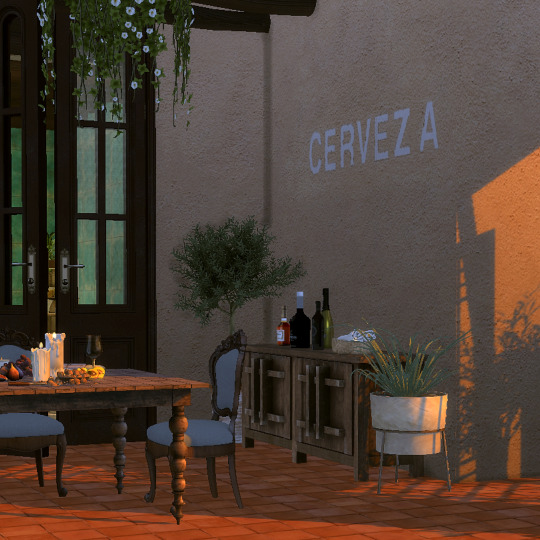


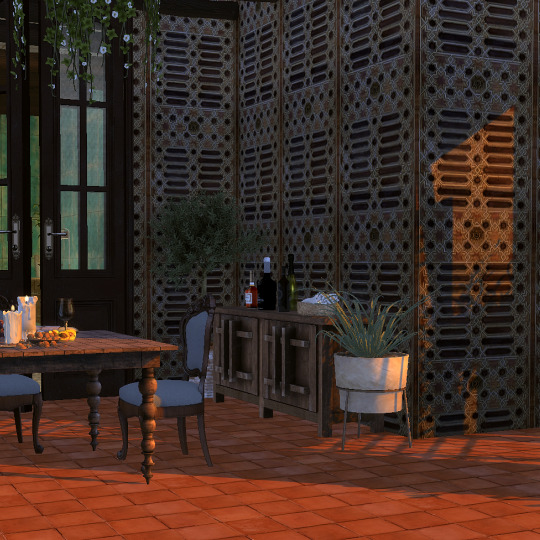


Della Casa - Hacienda
Part One:
The hacienda design style celebrates the rustic elegance and timeless appeal of Spanish old-world country estates. From rustic wood accents, cool tiled walls and decorative carved stone, a hacienda style intermingles soulful antiquity with more contemporary styles. With rich, alluring colours and natural materials, this collection has an emphasis on handcrafted elements creating a warm, inviting space with plenty of texture and bold patterns.
There are 20 murals and 20 1 tile wallpapers. Many of the murals repeat, but some dont.
DOWNLOAD
175 notes
·
View notes
Text
It's September and we're in a heatwave so instead of choosing violence here's some oppressive summer gothics to match the abysmal autumn vibes
The criteria - they have to be hot and humid, they have to be gothic in nature, dark in content, and they have to at least flirt with the paranormal






Summer Sons by Lee Mandelo
This follows Andrew as he moves to a college across the country to step into his dead best friend Eddie's old life as he desperately tries to prove that he must've been murdered. Haunted, both figuratively and literally, angry and grieving, Andrew sets off on a path that leads him to question everything he ever thought he knew about himself and their history together as he fights to accept who he is, who Eddie was, and maybe tries to learn how to live without him. Fast-paced, dark, and super gay.
Water Shall Refuse Them by Lucie McKnight Hardy
After the death of her little sister, teenager Nif and her family move to rural Wales for the summer in an attempt to escape their grief. Set in the 1970s during a heatwave the isolation and oppressive weather quickly start to take their toll. With an emotionally absent mother, a father with a wandering eye and a needy younger brother, Nif becomes convinced she's stumbled across her own kind of magic, before catching the attention of the strange boy across the street. Think Shirley Jackson, definitely not YA.
Dark and Shallow Lies by Ginny Myers Sain
Now, this is YA. We follow 17 year old Grey as she returns back to her tiny hometown in the Louisiana Bayou for the summer 6 months after her best friends mysterious disappearance. In a town that claims to be the 'psychic capitol of the world', someone must know something, right? Full of secrets, lies, and a boy who steps out of the forest with storm-bright eyes, this was a quick and twisty atmospheric read.
The Hacienda by Isabel Canas
When political upheaval gets her father executed and his family is left in shame and destitution, Beatriz decides she'll do whatever it takes to find security in her life again. When a handsome Don proposes, Beatriz jumps at the chance to accept and move out to his countryside estate with big plans for the future, but it doesn't take long before she's spending her nights terrorised by a mysterious entity inside her new home, forcing her to seek help from the strangest of places. The imagery is creepy, the tone is tense, there's a hot priest, what more do you want?
Cold Moon Over Babylon by Michael McDowell
Probably the darkest book on this list, and definitely the oldest. When a young girl is brutally murdered within sight of her home, it starts a chain of events that will see a family destroyed, secrets and lies exposed, and a vengeful creature that looks almost human to rise from the river as the town that surrounds it starts to crumble. The people are unlikeable, the book is old, the content is Dark - you've been warned.
Ghost Wood Song by Erica Waters
Also YA but this time for the bisexuals. Shady Grove can call ghosts from the grave with her music, just like her daddy could, but everyone knows that only trouble comes from playing for the dead. When her brother is accused of murder, Shady decides to embrace her birthright and use any power she can to clear his name. It's sweet, it's sad, it's lyrical, and there's a little bi love triangle sprinkled in to sweeten the sorrows. It's also a debut!
#book recs#summer gothic#september heatwaves for the L#summer sons#lee mandelo#water shall refuse them#lucy mcknight hardy#dark and shallow lies#ginny myers sain#the hacienda#isabel canas#cold moon over babylon#michael mcdowell#ghost wood song#erica waters#booklr#ya#horror#gothic#southern gothic#seriously tho#if youre at all sensitive to darker themes and topics#i highly recommend googling content warnings and triggers#cos ya know#theres a lot lol
115 notes
·
View notes
Text
The Republic of Yucatán (Spanish: República de Yucatán) was a sovereign state during two periods of the nineteenth century. The first Republic of Yucatán, founded May 29, 1823, willingly joined the Mexican federation as the Federated Republic of Yucatán on December 23, 1823, less than seven months later.[1][2] The second Republic of Yucatán began in 1841, with its declaration of independence from the Centralist Republic of Mexico. It remained independent for seven years, after which it rejoined the United Mexican States. The area of the former republic includes the modern Mexican states of Yucatán, Campeche and Quintana Roo. The Republic of Yucatán usually refers to the Second Republic (1841–1848).
The Republic of Yucatán was governed by the Constitution of 1841 which guaranteed individual rights, religious freedom and what was then a new legal form called amparo (English: protection).[3] The 1847 Caste War caused the Republic of Yucatán to request military aid from Mexico. This was given on the condition that the Republic rejoin the Mexican Federation.
The Caste War of Yucatán or ba'atabil kichkelem Yúum[2] (1847–1915) began with the revolt of native Maya people of the Yucatán Peninsula against Hispanic populations, called Yucatecos. The latter had long held political and economic control of the region. A lengthy war ensued between the Yucateco forces based in the northwest of the Yucatán and the independent Maya in the southeast.[3][4][5]
The Caste War took place within the economic and political context of late colonial and post-independence Yucatán.[6] By the end of the eighteenth century, Yucatán's population had expanded considerably, and white and mestizo Mexicans migrated to rural towns. Economic opportunities, primarily in the production of henequen and sugar cane, attracted investment and encroachment onto indigenous customary lands in the south and east of the peninsula.[7] Shortly after the Mexican War of Independence in 1821, the Yucatecan congress passed a series of laws that facilitated and encouraged this process. By the 1840s, land alienation had increased precipitously, forcing much of the Maya peasantry to work as indebted laborers on large estates (haciendas). This had a dramatic effect on the Maya and precipitated the war.[8]
In the 1850s, the United Kingdom recognized the Maya state because of the value of its trade with British Honduras (present-day Belize) and provided arms to the rebels at the beginning of the insurgency.[9] By 1867, the Maya occupied parts of the western part of the Yucatán, including the District of Petén, where the Xloschá and Macanché tribes allied with them. Growing investment in Mexico resulted in a change in United Kingdom policy, and in 1893 London signed a new treaty with the Mexican government, recognizing its control of all of the Yucatán, formalizing the border with British Honduras, and closing the British colony to trade with Chan Santa Cruz, the capital of the Maya.
The war unofficially ended in 1901 when the Mexican army occupied Chan Santa Cruz and subdued neighboring areas. Another formal end came in 1915 when Mexican forces led by Yucatán Governor Salvador Alvarado subdued the territory. Alvarado introduced reforms from the Mexican Revolution that ended some Maya grievances. Skirmishes with small settlements that rejected Mexican control continued until 1933.
54 notes
·
View notes
Text

Disney’s Primos was going to debut this month, but it had to be delayed again. Apparently, they needed to redub and reedit the name of the town they were in, from Terremoto (Earthquake) Hills to Hacienda (Estate) Hills, and that’s going to take some time.
8 notes
·
View notes
Text
Traditional scholarship in the history of science associates the quantifiable, universal human body with the European Enlightenment or ‘new science’. This measurable, universal body, it is argued, came to define modern medicine. Behind it lay the driving forces of political economy, [...] life insurance, and modern industrial [profit] [...]. But this widely accepted history of the universalisation and systemisation of human corporeality [...] [involves] an earlier global history of enslaving and measuring bodies in the Indies, born of the Iberian slave trade between Africa and colonial Iberian America. It was in the violent and profitable world of this slave trade that universal concepts and calculations of health risks, disease and bodily characteristics [...] emerged. Indeed, the scale of data production about bodies in the early modern world of Iberian slave trading far outpaced all contemporary systems of production of knowledge about the human body.
The key concept in this early modern quantification of the body was the pieza de Indias (Spanish) or peça da India (Portuguese). [...]
The appearance of this new measure and epistemology was intimately linked to the unprecedented rise in the size and complexity of the transatlantic commerce in human bodies during the first decades of the 17th century. The new, universal measure of man was the result of the slave trade’s need to quantify the risks of investing in human corporeality and its modern afflictions. By the late 16th century, Iberian slave traders, governments, corporations and financiers from around Europe (particularly from Genoa, Florence and the Netherlands) were already thinking of the transportation of slave bodies as units of risk.
---
The original licences for slaves transacted in Iberia were contractual concepts that did not refer to bodily characteristics [...] [and] were of limited help [...] for calculating the productivity [of a slave's body] [...]. Consequently, slave traders and slave-trading organisations, including the House of Trade (Casa de Contratación) in Seville, developed methodologies that allowed them to translate slave bodies into numbers and calculate the inherent value [...] as it related to an increasingly normalised, constant unit called the pieza. The concept of the pieza (the piece) allowed for the creation of contracts where investors, providers and the state could prospectively calculate tariff, gains and risk using quantifiable notions of bodies [...].
The historical record makes clear that the concept of ‘the piece of the Indies’ itself was already firmly established across the Atlantic basin by the early 1600s. [...] In addition to peça, Portuguese slave traders [in West Africa] used several other terms to refer to slaves who were not adult [...], reflecting an increasingly rich taxonomy [...]. Muleque or muleca [...]. Slave traders began using these terms to refer to young bodies that they discounted at rates [...]. Calculating the value of cañengues, muleques and mulecas by converting them into standard adult [...] piezas was a common practice [...]. Portuguese officials in Sao Paulo da Assumpcao de Loanda deployed the concept when they tallied ‘the dispatch’, or fees due to the Portuguese crown, for the embarkment of African slaves bound for the Americas. Such methods to appraise slave bodies became normative in Spanish America for determining the tariffs that traders had to pay to introduce slaves in the New World.
By the late 1530s, crown officials were counting the ‘pieces of slaves’ (piezas de esclavos) disembarking in Santo Domingo and selling them to miners [...] [and] hacienda owners [...] to work in the mines and estates of the island. [...] [A] concept of an ideal body for transportation and labour [...] had emerged across the Atlantic, and during the first decades of the 17th century it was disseminated across the Pacific and Indian Oceans, being widely used in Dutch trading records. [...] [S]lave traders and government officials used the term pieza to talk about other captive bodies from the Indies, most notably native or 'Indian' bodies in the Caribbean.
---
The concept of the piece of the Indies appears in full form in the 1660s as part of negotiations of the terms of the asiento de negros or slave monopoly between the Spanish crown and the Genoese financiers Domingo Grillo and Ambrosio Lomelín. The contract with the Grillos established that they would ‘bring 24,500 blacks, piezas de Indias, over the course of seven years and starting in 1662’. The monopoly established as one of its conditions that ‘the said quantity of blacks should be piezas de Indias, each one seven cuartas of height and up’. [...] Slave traders used height as a proxy for life histories of health and nutrition and as a predictor of the slave’s potential productivity [...] [and] created a complex system around the marker of height [...].
[H]aving grey hair, for instance, translated into a reduction in value of one cuarta or one-seventh of the standard pieza. The conditions of 'cloud in one eye [cataracts]' signified a reduction of two cuartas; scurvy, two cuartas; phlegm, one and one-half cuartas; a 'benign hernia', one cuarta [...]. Being older than 35 years merited a one-cuarta deduction [...]. The presence of lobanillos (small tumours) was worth one and one-half cuartas’ reduction; small fingers, one-half cuarta; incapacitating scars (burns), one and one-half cuarta; [...] localised ulcers, one-sixth of a cuarta; generalised ulcers, one cuarta; [...] short-sightednesss, two cuartas; [...] missing molars, one cuarta [...].
---
The contractual articulation of the concept of the piece of the Indies [...] formalised slave-based knowledge production about human bodies. The contract assembled a vast storehouse of knowledge, much of it held in the House of Trade in Seville, obtained from thousands of records of bodily characteristics and diseases for hundreds of thousands of bodies [...]. The Grillos’ contract set a precedent for the 1679 contract between Spanish and Portuguese merchants and the Dutch West India Company. The 1696 asiento between Spanish crown and [financier F.M.] and [financier N/P.], for example, agreed they would transport 10,000 tonnes of freight including 30,000 piezas de Indias of the ‘regular measure of seven cuartas’. Similarly, a 1709 contract between the French Compagnie de Guinée and Dutch slave traders, settled in Amsterdam, specified that the French would pay 110 pièces de huit (pieces of eight) ‘for each black piece of Indies’ delivered in the Caribbean.
As the ‘new science’ of the European Enlightenment dawned in Europe, the piece of the Indies was well established as the most disseminated universal measure of the human body.
---
All text above by: Pablo F. Gomez. "Pieza de Indias: Slave Trade and the Quantification of Human Bodies". A chapter in New World Objects of Knowledge: A Cabinet of Curiosities (edited by Mark Thurner and Juan Pimentel), pp. 47-50. Published 2021. [Bold emphasis and some paragraph breaks/contractions added by me. Presented here for commentary, teaching, criticism purposes.]
#abolition#caribbean#tidalectics#pathologization#intimacies of four continents#archipelagic thinking#indigenous#carceral geography#geographic imaginaries
15 notes
·
View notes
Text






more queer (mostly sapphic) books on my tbr pt. 2!🤍🤍
1. Solita, Vivien Rainn
“Sadie is her name, and she is passing through the motions of a life soaked through with the stench of death. Grief-ridden nightmares plague her every sleepless night, only to continue into the day when she awakens to the burden of running her family’s centuries-old estate:
The Hacienda Espinosa, a yawning, black-wooded beast of a mansion nestled in the jungles of the Philippines' Palawan Island, a house that offers Sadie nothing but a perpetual reminder of what once was, what can never be again. She is alone, save for the sound of her own lonely, broken heartbeat—that is until the day she hears another. And it’s coming from beneath the floorboards.
Unearthing what was left to rot beneath the house, Sadie realizes her fatal mistake; the dark secret was never buried to be forgotten. It was buried to be sealed away.
It’s no mortal, no man, but the Hacienda’s first owner—a demon.
And he’s nothing like she expects.
It’s only through facing the past and her buried fears can Sadie find salvation as she upturns the Hacienda’s twisted roots, roots born from the faith and fire of the conquistas, the Spaniards who came from distant shores, bringing with them not only their God, but also their demons.”
2. In the Roses of Pieria, Anna Burke
“When Clara Eden is offered a job as an archivist working for eccentric estate owner Agatha Montague, she thinks her prayers have been answered. Soon, she finds herself sucked into the world of her research, captivated by a romantic correspondence thousands of years old. But as her feelings for her employer’s assistant, Fiadh, deepen, so too does her suspicion that something about Agatha Montague isn’t quite right. Unfortunately for Clara, by the time her suspicions are confirmed, it is far too late to run.”
3. The Deep, Rivers Solomon
“Yetu holds the memories for her people—water-dwelling descendants of pregnant African slave women thrown overboard by slave owners—who live idyllic lives in the deep. Their past, too traumatic to be remembered regularly is forgotten by everyone, save one—the historian. This demanding role has been bestowed on Yetu.
Yetu remembers for everyone, and the memories, painful and wonderful, traumatic and terrible and miraculous, are destroying her. And so, she flees to the surface escaping the memories, the expectations, and the responsibilities—and discovers a world her people left behind long ago.
Yetu will learn more than she ever expected about her own past—and about the future of her people. If they are all to survive, they’ll need to reclaim the memories, reclaim their identity—and own who they really are.”
4. Our Share of The Night, Mariana Enriquez
“A young father and son set out on a road trip, devastated by the death of the wife and mother they both loved. United in grief, the pair travel to her ancestral home, where they must confront the terrifying legacy she has bequeathed: a family called the Order that commits unspeakable acts in search of immortality.
For Gaspar, the son, this maniacal cult is his destiny. As the Order tries to pull him into their evil, he and his father take flight, attempting to outrun a powerful clan that will do anything to ensure its own survival. But how far will Gaspar’s father go to protect his child? And can anyone escape their fate?
Moving back and forth in time, from London in the swinging 1960s to the brutal years of Argentina’s military dictatorship and its turbulent aftermath, Our Share of Night is a novel like no other: a family story, a ghost story, a story of the occult and the supernatural, a book about the complexities of love and longing with queer subplots and themes. This is the masterwork of one of Latin America’s most original novelists, “a mesmerizing writer,” says Dave Eggers, “who demands to be read.”
5. The Gilda Stories, Jewelle Gomez
“This remarkable novel begins in 1850s Louisiana, where Gilda escapes slavery and learns about freedom while working in a brothel. After being initiated into eternal life as one who "shares the blood" by two women there, Gilda spends the next two hundred years searching for a place to call home. An instant lesbian classic when it was first published in 1991, The Gilda Stories has endured as an auspiciously prescient book in its explorations of blackness, radical ecology, re-definitions of family, and yes, the erotic potential of the vampire story.”
6. To Be Devoured, Sara Tantlinger
“What does carrion taste like? Andi has to know. The vultures circling outside her home taunt and invite her to come understand the secrets hiding in their banquet of decay. Fascination morphs into an obsessive need to know what the vultures know. Andi turns to Dr. Fawning, but even the therapist cannot help her comprehend the secrets she's buried beneath anger-induced blackouts.Her girlfriend, Luna, tries to help Andi battle her inner darkness and infatuation with the vultures. However, the desire to taste dead flesh, to stitch together wings of her own and become one with the flock sends Andi down a twisted, unforgivable path. Once she understands the secrets the vultures conceal, she must decide between abandoning the birds of prey or risk turning her loved ones into nothing more than meals to be devoured." Sara Tantlinger's To Be Devoured capitalizes on our macabre preoccupation with the uglier side of nature, with love that topples into obsession, and with madness that is strangely beautiful in its barbarity.”
3 notes
·
View notes
Text
lalo salamanca headcanons
He's a black-hearted asshole. It's an important core aspect of his character and it can't be ignored.
He has a dead sibling. My HC is a dead sister who got married and then her husband killed her. Death lives cheek by jowl in the Salamanca family. There's a reason for those empty spaces.
He wasn't born with severe antisocial tendencies, and a naturally extroverted personality made him more open to experiences than some of his more rigid relatives. The rot set in to the idealism early, maybe 7 or 8 years old. I actually see the twins grappling with suppressing their feelings more than Lalo - he's the perfect adaptable boy-Prince that adapts to suit the family, and never really took the time to build anything under that veneer. He takes information in purely to benefit himself or benefit his family. The emotionality and empathy has been stripped away. This is a DARK character.
One of the roles he's tried on that he's put a little more into is the benefactor role to the peasants that live on/or near his estate, in fact most of the underlings associated with the Salamanca holdings. It reinforces to Lalo a sense of benevolence, which at its core is still basically transactional. The people under him have no choice to do what they do. It's the performance of helping them out that makes Lalo feel good about himself.
He was absolutely going to murder Kim when Jimmy left. That whole speech about the people the assassins killed at his hacienda reeked of a tit-for-tat situation. He no longer trusted Jimmy at all so he had no further utility to him as a lawyer. He was going to kill Jimmy's wife as punishment for that, torture the truth out of Jimmy when he returned from the laundrette, and then kill him.
Lalo's blue shoes tie into what I mentioned about him having an attachment to being seen as perfect/a benefactor/on the "right" side of things. Blue = personal law in BCS. Lalo never does anything that doesn't benefit himself or his family, so he always sees himself as following the correct path. He feels 100% justified in his sabotage mission against Gus, and then in the atrocities he commits in attempting to come back and bring him up in front of Eladio. He would actually feel morally angry at the implication any of that wasn't right - you protect yourself and you protect your family. In his eyes, he's bringing a liar and a traitor to justice, a snake who is attempting to bring down their cartel from the inside. In that respect, Lalo has a parallel with the most unlikeliest of BCS characters - Chuck McGill.
The insomnia is the barest of brush strokes that imply Lalo's possible ambivalence about the life he was born into. Gilligould have notoriously not given the characters of colour much contextual depth at all outside of roles that serve the cartel story, and Lalo is no exception, but I still think it was the barest of indicators of another story being played out there. Like Howard Hamlin dissuaded early on from putting up his own shingle and making an identity for himself outside of what his father expected of him, Lalo, neck deep in the lifetime role of cartel Prince, may have felt the twingings of his own destiny being held away from him. TDalton's comments about Lalo believing he could die at any point has an interesting, nihilistic extension here - so why bother?
He's a Hufflepuff. His people, his group, and himself above all. Duty, discipline, and "fairness" - all Puff traits. His contempt for Slytherin Gus is for Gus's refusal to accept his position and bend the knee - he sees Gus's strident individualism as selfish, in comparison to his own lifelong commitment to his family and the cartel. On the positive side, he can do a surface level cohesion with groups, some performative actions of good on behalf of the group(s) he identifies with, and skilfully takes Nacho and sends him up to the boss. There's a reason old ladies seem to adore Lalo - he, in an entirely selfish sense, works within the group.
#lalo salamanca headcanons#better call Saul#listen I've seen the posts extolling lalo as some romantic figure and if that's how you like him then sure#but honestly black-hearted murdering asshole Lalo Salamanca is a great character to me#he is incapable of having a human relationship! he's a cautionary tale about the effects of soul-degrading violence!#he is an extremely smooth presentation of cartel violence in the real world being soulless and sociopathic#and that's compelling shit! that's a real character!#uncompromising evil has depths#tbh I wish they could've done more on the cartel Prince side of things. I would totally watch Lalo Salamanca returning to Mexico instead#and pulling Shakespeare levels of shenanigans on Don Eladio to get him to turn against Gus#give me the Lalo Salamanca that has influence and turns men against each other for profit#and a wounded bat-sh*t sense of justice
38 notes
·
View notes
Text

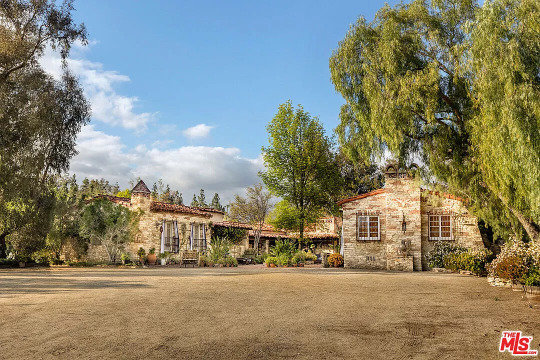
Incredible 1933 Spanish home in West Hills, CA has 6bds, 5ba, $6.495M.
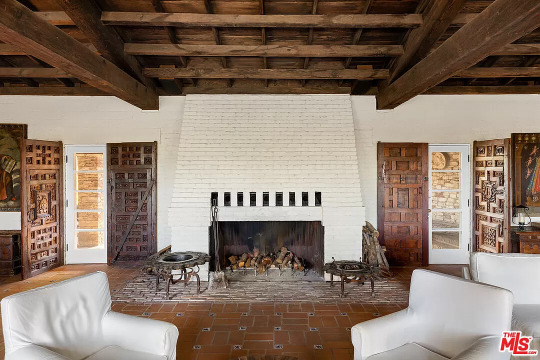
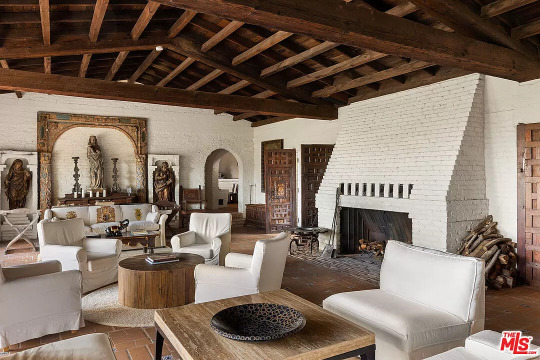
The rustic Spanish home has beautiful beamed ceilings, rustic doors, brick walls and a large fireplace painted white.
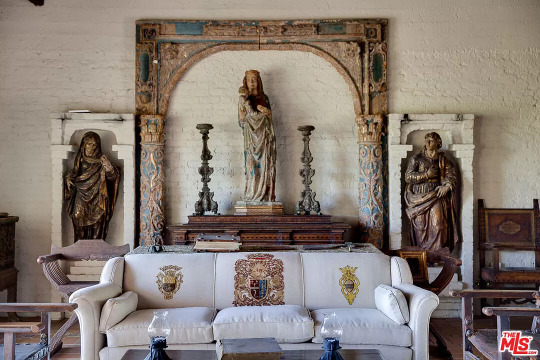
We know that the statues belong to the homeowners, but the frames are likely architectural salvage pieces that also belong to them.

Lovely arched windows. When I look at a home like this, I think of how long it must've taken to collect all of the beautiful furniture and accessories and I know that I could never make it look like this.
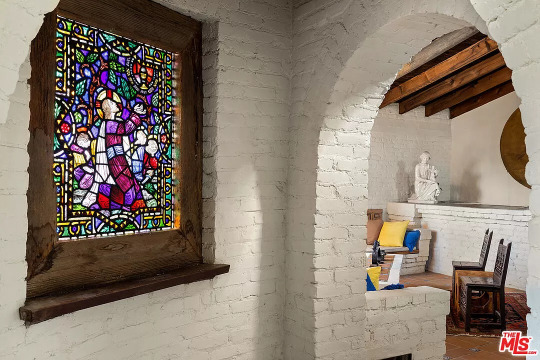
I like the archways and look at the stained glass.

In this room, there's a huge curved built-in brick sofa. I like the tile floors going throughout the house.
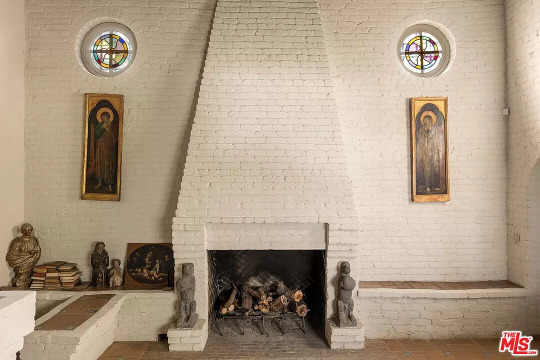
Another beautiful fireplace with round stained glass windows, and built-in benches and platforms.
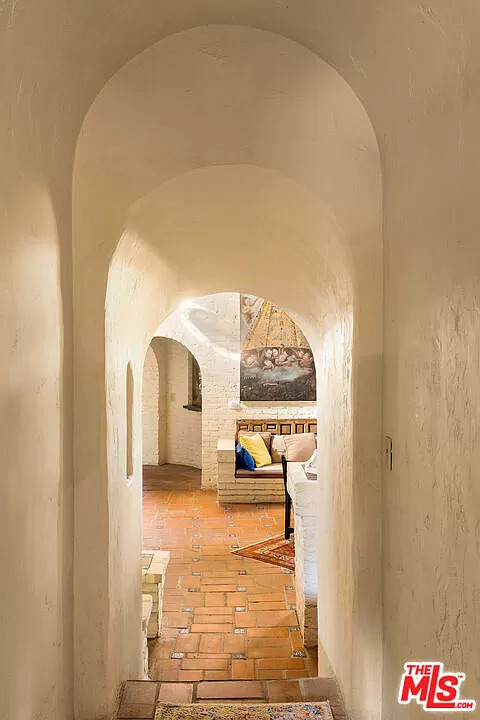
Beautiful architecture.
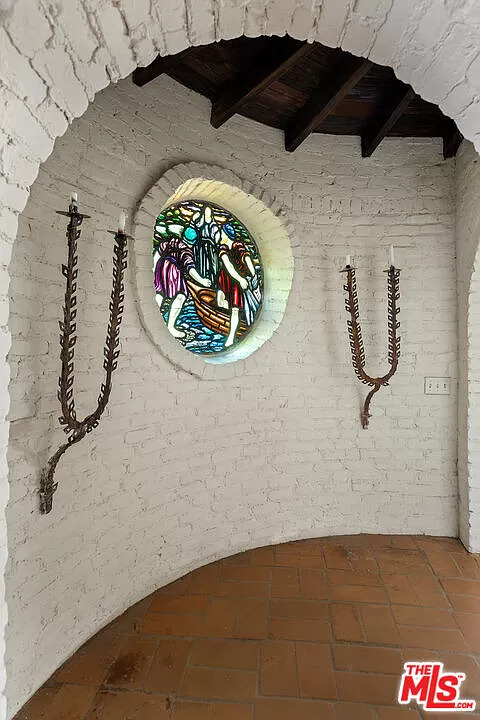
Curved brick walls and another round stained glass window.
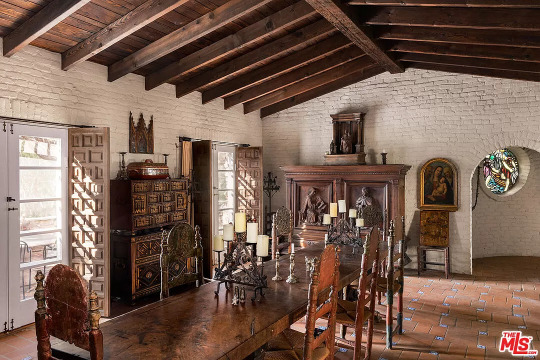
The dining room is very big and has 2 sets of doors to the patio.
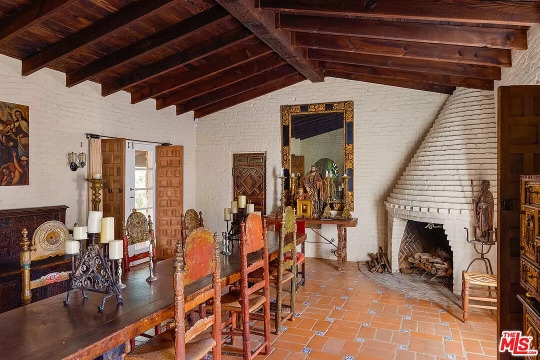
The corner fireplace in here is beautiful.
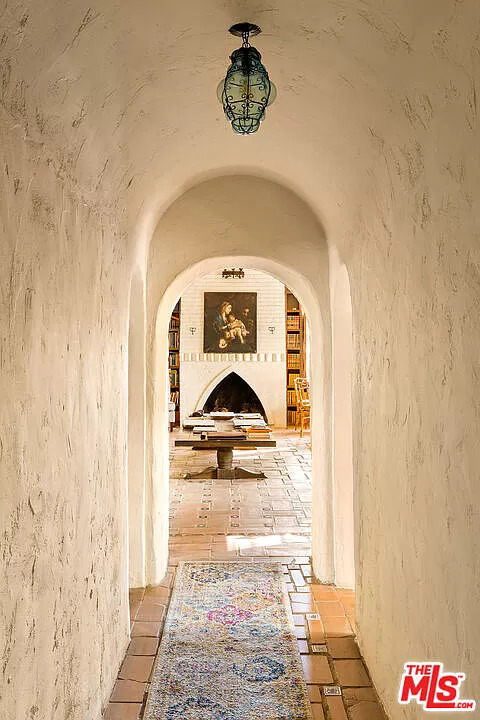
The stucco walls and arches in the halls are wonderful.
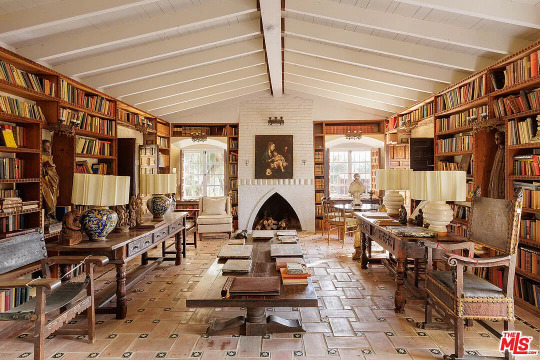
The fireplaces in this home! And, each one is different. What a huge library.

This is nice, the bath has an original vintage tub.

Beautiful carved sink vanity has double sinks and the typical Spanish tile counter.
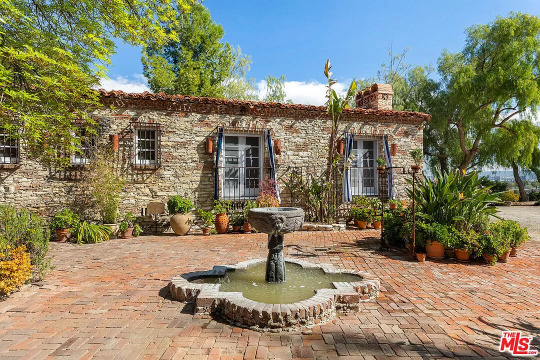
The brick patio is like a picture with it's container gardens and fountain.

The patio continues around the house where there's a gorgeous outdoor fireplace.
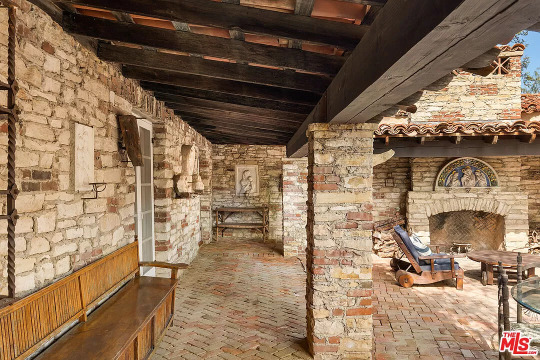
Nice covered area.
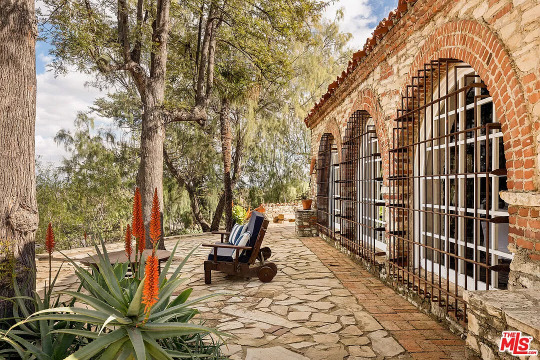
Here, the patio changes to stone. What wonderful grill work on the windows.
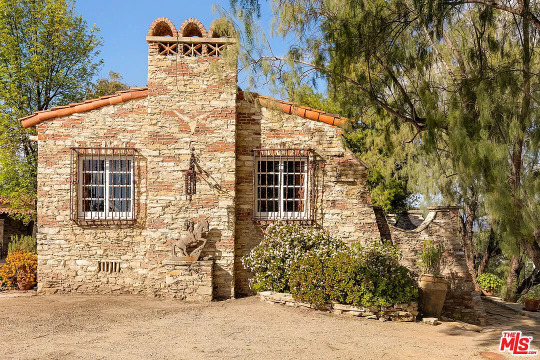
The whole house is just beautiful.
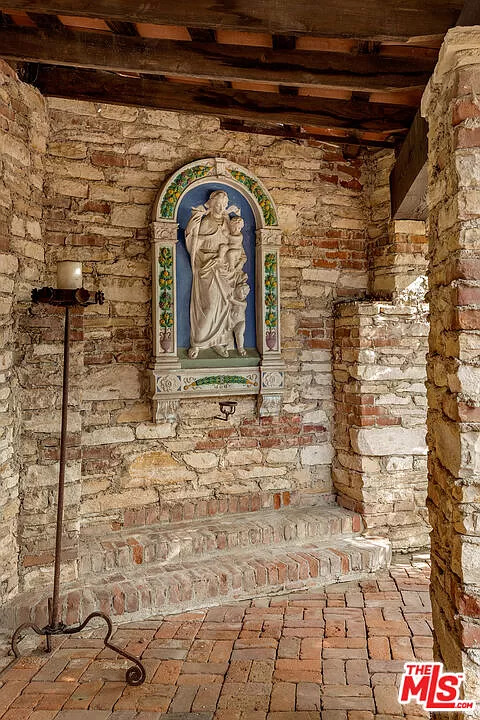
They've got a little shrine here.
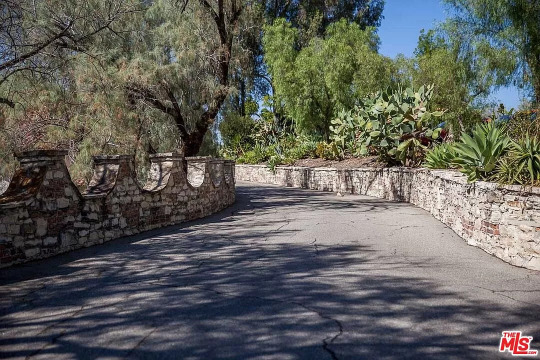
The drive is lined by lovely stone walls.
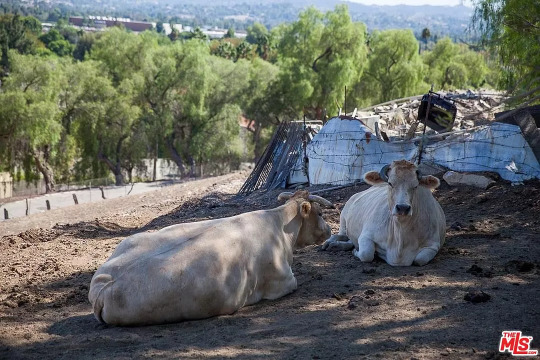
Look at these 2 dudes chillin' in the shade. I wonder if they convey.
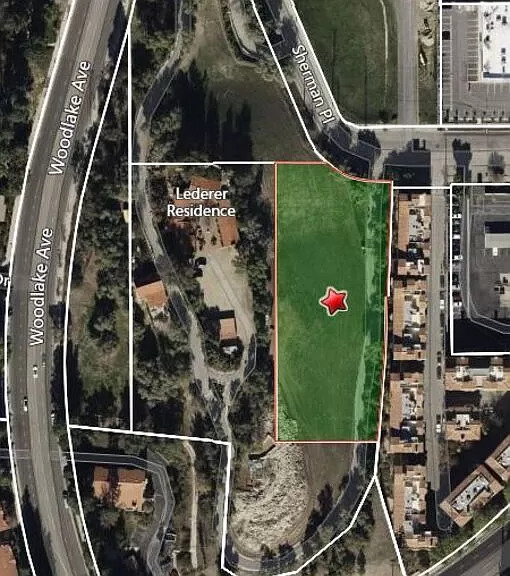
The land is 6.70 acres.
https://www.zillow.com/homedetails/7210-Woodlake-Ave-West-Hills-CA-91307/2058999233_zpid/
156 notes
·
View notes
Note
Well, they started talking about a nearby multi-million dollar listing which just got sold - a large "ranch" type compound. And they namedropped who bought it.
Drake /////
Ooo this is gossip I like!!!
I was at Drakes tour when he announced he was “a Texan now” after finding a place in Houston… and I work in real estate in Texas as well & there’s certainly gossip 😂😂
But what I heard was it’s not just any simple “ranch” it was a whole ass resort (Dos Brisas ranch) that closed due to Covid in 2022 😂 also it’s not technically houston, as he said, but technicallyyyy Chappell hill
(Obviously I’m not certain but just the gossip I’ve heard working around Houston real estate)
Right, this is basically what the ladies yesterday, who were all Round Top realtors, were saying. That it was nearby Round Top, which Chappell Hill is, and that it was already a large developed site with a restaurant on it. Dos Brisas sounds like a match to what they were discussing.
As @luckydiorxoxo and I were discussing yesterday, sounds like he's looking for business branch-outs, not necessarily private estates. Dos Brisas is 313 acres with private guest haciendas (with private pools) and a five-star restaurant already in place, as well as exquisite stables for "adventure" for the guests who want to go horseback riding. Boutique resorts are so hot in that area, due to Round Top; I can see it being a savvy investment if run well. However, 15M is a huge initial investment, and that's even before all the costs of hiring staff and stocking the rooms and site.

The Inn at Dos Brisas.
5 notes
·
View notes
Text
16 Cartas.
Javiera:
En momentos como estos me alegra haber estudiado con los jesuitas, me enseñaron a leer y escribir, y gracias a ello puedo seguir manteniendo comunicaciones contigo. Vea, aunque me hayan botado de la hacienda, me imagino porque su señora madre supo de lo nuestro, tenga por seguro que esto no acabará aquí. Por eso, corazón, extiendo mis saberes para ti por medio de estas cartas que le estaré enviando de a poquito, y en cambio, quiero que usted haga lo mismo para conmigo. Ponga su carta, por favor, en el mismo lugar donde yo deposito las mías, así cuando pase por las noches podré tomarlas y leerlas y después enviarles mis respuestas.
No las fecho porque, ya sabe, por la clandestinidad de esto.
____________________
Javiera:
Me complace que me hayas hecho caso. Cuando pasé por la noche cerca de la ventana de su habitación y ahí vi la carta, debo de admitir que el aliento se me escapó. Más se me escapó cuando lo leí justo ahí. Lo sé, qué imprudencia la mía, pero las emociones me pudieron más. Su mensaje fue corto ¿es por el miedo a esto? Le comprendo, estoy igual. Pero mire, habrá sido corto pero igual me hizo sentir cosas. Y cuando llegué al final del mensaje, cuando me pedías que me cuidase, que comiera y durmiera bien, se me ha escapado la sonrisa boba. ¿Cómo lo haces, mujer? ¿Esto de hacerme sonreír con tan poco? Usted parece bruja ¿Qué maleficio me ha echado? Pero no importa, me gusta.
Usted que me deseó tantas buenas cosas, yo le deseo eso y algo más: sueña con los angelitos.
____________________
Javiera:
Comprendo que queme las cartas por su seguridad. Yo las tuyas las tengo guardadas, me puedo dar ese lujo, usted no. No importa ¿sabe por qué? Porque usted tiene un gran corazón, el cual dicen que alberga todo esto a lo que llamamos sentimientos y sé que aunque queme mis escritos, ahí donde tiene el corazón, ahí está mi tinta como recuerdo. Creo en esto. Sabes, mi madre también tenía un gran corazón, uno demasiado grande, y era así. Daba igual cuánto pasara, recordaba a pie juntillas todas las veces que le dije “te amo”, y mi corazonada dice justo eso, que usted recuerda todo lo que le he escrito y lo recita como mantra, tal como yo, en mi trabajo, recito el suyo, porque esto que nos escribimos es un “te amo” aunque la frase no haga presencia.
____________________
Javiera:
Hoy fui a misa, el Padre en su sermón dijo “todos los caminos llevan a Roma”. No me pregunte por el sermón, no presté atención, sabe cómo soy. En eso que iba para mi casa me topo con esta división de caminos. Uno va para mi hogar, el otro para el suyo. Ahí exclamé “¡oh!” porque justo me vino de nuevo esa frase cuando vi el camino. Yo digo que tú eres mi Roma, y sí, todos los caminos siempre me conducen a usted. Estoy seguro que puedo irme a la montaña más alta de por aquí, vivir ahí una temporada, y cuando baje, aun sin conocer el camino, sin duda terminaría frente a su hacienda porque eres Roma. La altiva, la recia y la necia. Esa Roma es usted.
____________________
Javiera:
¿Cómo puede decir que se le ha olvidado montar a caballo? Tanto que me costó enseñarle; eso nunca se olvida, cariño. Creo que me estás mintiendo. Cuando leas esto dirás “¿cómo?” pero no se haga. Es una trampa. Quieres que vaya allá y nos veamos, eso quiere. Se hace la tonta, pues, para vernos una vez más las caras. Sí, sí. Estate atenta la próxima semana y tendrá que estar en vela, iré allá y me verá, aún en la oscuridad de la noche, pero me verá.
____________________
Muchachita:
¿Te puede decir así? Verá, ayer soñé contigo y te volví a ver y caí en cuenta que eres bastante bajita. Me reí al verla. Le llevo una cabeza de alto, quizás una y media. Entonces para burlarme de usted le puse mi codo en su cabeza y apoyé ahí mi peso. Se enojó. Yo me reí, porque así mismo es usted en vida real.
A veces siento que mis sueños son realidades, que la usted de ahí es verdadera. Debe imaginarse mi decepción cuando me despierto y no es así. ¿Usted sueña conmigo también? Porque si es así, quizás sea cierto lo que me dijo el indio aquel, que a veces los sueños son realidades y estas se dan cuando dos personas sueñan con ellas al unísono. Si ayer soñó conmigo. . . Tengo el corazón en la garganta, mujer. Solo de pensar esa posibilidad.
____________________
Javiera querida, muchachita mía:
No se preocupe por mí, le aseguro que el accidente no fue tan malo como lo describí en mi anterior carta. Creo que me entró la vena dramática y por eso lo redacté como tal. Pero no te enojes tampoco, por favor, que desde acá siento cuando estás hecha un huracán. Me quedó solamente una cicatriz en la frente, un tanto prominente pero nada catastrófico. Le juro que sigo siendo guapo, mujer, que no me volví el feo del pueblo. Tan así que le pedí a mi hermano Francisco que me retratara, ya sabe, él dibuja bonito, y ahí verá. Y después con ese retrato lo puede guardar o quemar, lo que mejor le convenga, pero yo insto a lo primero ¿sí? Temo a veces que se olvide de cómo me veo.
____________________
Mi corazoncito:
Vea, anteayer andaba por la plaza del pueblo y por ahí había un artesano vendiendo sus cosas. No tenía absolutamente planeado comprarle algo pero vi una cuestión que me llamó la atención. Había una muñeca de porcelana y era igualita a ti, pero es que igualita se queda corto. Era tu viva imagen. Solo le faltaba un poco de rosa en los mofletes y eras tú. Se hizo el día el artesano conmigo. Ahí lo tengo bien guardado en una cajita para dártelo, no sé cómo porque las cartas pasan bien entre las ranuras de la ventana, no así una caja, pero usted lo tendrá más pronto que tarde y podrá confirmar lo que le dije.
____________________
Muchachita:
Usted no sabe cuánto me complace saber que le ha gustado el regalo ¿vio que se parece a ti? Su comentario me hizo sonrojar, Dios mío, tenía los cachetes a candela viva. ¿Me da permiso para sonrojarme? Le pregunto porque dicen que esto de sonrojarse no es cosa de varones, y que ustedes las mujeres odian eso de nosotros, pero también dicen que pedirle permiso a una mujer es incorrecto, pero yo digo que sí quiero estar con usted, que lo nuestro trascienda, debo saber lo que piensas y lo que quieres, y cumplir (juntos) esos deseos.
____________________
Javiera, corazón:
Sé que he tardado mucho en escribirle. No piense que me he olvidado de ti. Antes muerto que eso. Mire, me salió un trabajo a un pueblo más alejado de donde estás y por eso ha costado poder enviarle mis escritos. Calma, sí, es un trabajo temporal así que no se asuste, cuando vuelva a donde estaba seguiremos la correspondencia con la misma frecuencia de siempre. En esto que he estado más lejos de ti hice introspección sobre cuánto te amo. ¿Sabe a qué tan lejos estamos? Los cálculos que saqué fueron de 10 leguas. Entonces puedo decirte una cosa: mi amor por ti es tan grande como 10 leguas de distancia.
____________________
Amor mío:
Quiero hacerte una pregunta retórica ¿Sabes cuántos llevamos en esto de las correspondencias? Nunca feché mis cartas, usted hizo lo mismo, pero recuerdo vívidamente el día en que escribí mi primera carta a usted. 16 de enero de 1871. No hay en absoluto nada especial en esas fechas, hasta ahora; ya dos años de eso es prueba suficiente como para decirte que el 16 de enero es de mis días favoritos porque recuerdo esto que hemos mantenido con tanto receloso entre ambos y es especial por ello. Mis hermanos se burlaron de mí la primera vez que les conté sobre estas correspondencias. Me dijeron “¡eso no va a funcionar!” y yo les dije que se mordieran la lengua los tres. Lo que más me llena es que justo no parece perecer este ejercicio, seguimos en lo mismo, con una frecuencia envidiable, eso me dice que aún no se ha aburrido de mí y ya sabe, yo no me he aburrido de usted.
Pero también otro pensamiento me ha invadido la cabeza. Eso que hemos durado me parece casi que inverosímil. Lo que le quiero decir es que nunca me consideré buen hombre. Usted si estuviera cara a cara conmigo me habría dicho que lo contrario, lo sé, pero me explicaré. No me considero buen hombre porque no lo soy. Para entrar a trabajar en su hacienda me valí de tretas para sacar del paso a uno que poseía más experiencias que yo. Antes de eso, con Ángel hacíamos cuatrerismo por ahí y de hecho, casi me meto a bandolero en una vuelta, sino fuera que Rodrigo me sapeo sobre que ustedes buscaban un caporal y que era mejor eso que acabar colgado de un árbol. Yo solo estaba ahí para ganar dinero, hasta que la conocí. Después de eso no he sido el mismo.
A usted le debo de agradecer muchas cosas; primero, su amistad; segundo, su amor; tercero, mi salvación por usted. Porque verá, cuando comenzó nuestras andadas me dije que cambiaría porque usted se merece algo mejor que ese diablillo que llegó ahí por puras artimañas y que quería seguir en esas sendas. Me dije que no se merecía eso. Por eso cambiaba, más buena gente quería ser, y sí vino de corazón, si no, no hubiera llegado hasta donde estoy. Y como un acto de esos, de buena gente, yo le confieso esto sobre mí a sabiendas que puede cambiar su percepción de mí, pero como la amo mucho mucho y sé que es lo correcto, no tengo más opción que hacer esta prueba de fuego y esperar su respuesta.
____________________
Javiera:
Mi pregunta para ti es: ¿estás loca? He demorado en contestarle porque he estado analizando su propuesta. Es bastante osado. Si falla estaré yo colgado en algún árbol de la zona, lanceado por alguien de su escuadra o bien, muerto a hierro. Pero lo que más temo es por ti, lo que te pueda suceder. Pero si es así, habrá que irse lejos, muy lejos de estas montañas ¿Aguantarás el calor de las llanuras? Porque solo yendo para allá o lugares así estaremos a salvo.
____________________
Javiera:
He logrado convencer a mis hermanos para raptarte, porque por más que lo quieras vender de otra forma, lo que haremos es un rapto. “Convencer”, bueno, no será la palaba correcta porque solo se los comenté y aceptaron de una vez. Ahora los quiero mucho. Pero en fin. Estate atenta en esta luna menguante que viene por ahí se hará esto. Ten a mano solo lo necesario. Eso es lo único que te recomiendo.
____________________
Moreno. 1 de agosto 1888.
Muchachita mía:
Lastimosamente ha de esperar más. Este señor que no es más que un desgraciado aún no me paga las reses, así que le dije “aquí estaré” y heme aquí, día a día yéndole a cobrar. Pero pese a ello me puse a pensar en ti y me volvió a salir la risa boba. ¿Sabes qué recuerdo? Pues mire. Oficialmente me llamo Juan Jáuregui y usted Manuela del Cid, pero yo la conocí por Javiera Gonzáles y usted a mí por Andrés Gómez. Por cosas de la vida acá me han apodado André, que no Andrés, y he sonreído tan grande porque hacía tiempo que alguien que no fuese cercano mío se refiriese por mi nombre, o en este caso, algo cercano a mi nombre. Ahora que lo pienso, y es que ni gente cercana. Esos chiquillos endiablados tuyos me dicen “papá Juan”, pero me gustaría que me dijeran “papá Andrés” pero no se puede. ¿A usted le gustaría que le dijeran “mamá Javiera”? Me temo que sí, por los nombres eran necesarios para disipar cualquier persecución.
Nos casamos como Juan Jáuregui y Manuela del Cid, pero para mí siempre serás Javiera y es el nombre con el cual te llamo sea aquí, en tinta, o allá, con voz. Cuando canto es el nombre que sale, cuando pienso en ti pienso es en Javiera. Mi vida la estoy edificando con Javiera Gonzáles. Por eso a veces cuando andamos en público me enerva no poder decir tu nombre a la otra persona, porque quiero decirles “sí, ella es mi esposa Javiera” y no eso de Manuela. Se me pasó por la cabeza rápido proponerte usar nuestros verdaderos nombres, pero caí en cuenta que ya ha pasado mucho tiempo y todos nos conocen por Juan y Manuela, solo nos queda ese nombre para nosotros, y mis hermanos supongo, y unos que otros amigos tuyos. Pero ya le digo y le repito que para mí eres Javiera. La altiva, la recia y la necia. Mi Roma. Mi bruja. La de muy gran corazón.
—Andrés Gómez.
____________________
La Espiga. 16 de enero de 1920.
Amor mío:
Vieras lo que me pasó. Acá esperando a que el señor arregle la muñequita de porcelana me vino una niñita muy parecida a uno de los chiquillitos de tus endiablados chiquillos. Me dijo “¡qué pelo más blanco tiene, señor!” y yo me he reído y sonreído. Cómo pasa el tiempo, tanto que uno de mis hermanos ya no está con nosotros y cada tanto tengo que hacer un recuento de cuántos nietos llevamos porque siento que cada año salen dos más. El tiempo pasa muy deprisa y ahí me imaginé tu rostro y se me magulló el corazón. Estás como yo, con el pelo muy blanquito pero al menos mis cejas siguen siendo oscuras, las tuyas no. Y tu rostro, muy arrugado, como el mío también. Mas me alegra que podamos seguir caminando a la par; me gusta ir contigo a la plaza y sentarnos ahí a ver la gente pasar. Gracias a eso volvió a latir mi corazón, porque aún sigues conmigo a mi lado. Se me pudo haber magullado un poco el corazón pero siempre se recupera gracias a ti.
—Andrés Gómez.
____________________
20 de octubre de 1926.
Mi querido:
De todo lo que vivimos tengo una queja, quizás la única queja que te pueda tener: me consentiste mucho, demasiado. Como no estás espero paciente tus cartas, como siempre has hecho cuando no estamos juntos, pero no llegan. Creo que mis “endiablados” chiquillos se han dado cuenta de mi tristeza, sino no se explica que me haya visitado uno de tus hermanos. Hablamos un poco. Hablamos de ti. Me reí mucho con sus cuentos y sonreí bastante gracias a esas tertulias. Aún recuerdo cómo me hiciste “incivilizarme” (tus palabras, no las mías) solo para que calzara entre el campesinado porque según tú andaba muy de fina. No te mentiré, sí me costó, me costó pasar de mi casa de adobe a tu rancho de pencas que suelo de tierra poseía; me costó trabajar lo suyo el campo, me costó entender a las bestias y domarlas. Te maldecí una vez. Pero a las finales te lo agradezco. Sé más gracias a estar contigo a lo que sabría si me hubiera quedado allá. Gracias a ti puedo tocar la guitarra, y cantar algo, ¿recuerdas cuando canté para el cumpleaños número treinta de Ángel? Se me salieron los gallos pero no me dijiste nada, solo me sonreíste, pero no por gracia, sino por orgullo.
Dijiste que tengo un muy gran corazón. Creo que ahora me está siendo contraproducente. Sí cariño, recuerdo todas esas cartas quemadas en la chimenea. Las releía muchas veces, tantas que me sabía línea por línea lo que decía. En efecto, eran “te amos” no puestos. Pero ahora ese gran corazón lo siento un poco quebrado. Cuando me despierto siento un peso en el otro lado de la cama y me volteó rápido pensando que eres tú. Mi decepción es mayúscula cuando no te veo. Quiero que estés aquí conmigo, pero eso sería muy egoísta ¿no? Porque me imagino que allá donde estés andarás muy feliz con tu madre y cantando con tu hermano. Aún me queda tiempo aquí. A veces quiero que sea poco y otras no, porque si no ¿quién cuidará de tus endiablados chiquillos y sus chiquillitos?
Así que heme aquí, escribiéndote aunque sé que no tendré respuestas, pero lo seguiré haciendo Andrés, ¿sabes por qué? Porque este ejercicio que llevamos haciendo más de cinco décadas solo puede morir cuando los dos ya no estemos aquí. Por tanto aquí estaré llenando esa cajita de madera con estas cartas mías y las tuyas, las que ahora sí guardé, ahí al ladito de la muñeca de porcelana.
—Javiera Gonzáles.
__________________________________________________________________
@animeluci-98thpg Aprovechando que aún poseía un ápice de inspiración y que a la vez estoy desempleada así que tiempo tengo, le hice esto para emendar la trapeada que le he hecho a su OTP porque donde aparezca la Javiera es para andar de loca o tener más cuernos que un vena’o. Así que algo más feliz.
Eso no quita que es mucho más entretenido pensar a Javiera con más cacho que un toro o que los poderes sobrenaturales de Diomedes sean tal que pueda volver cuck a Andrés. Por lo menos acá nos podemos reír un poco que los hermanos hayan dicho «hell yeah, raptemos a la cuñada» sin pensarlo dos veces.
Más tarde subo esto a AO3 para mejor lectura.
Editado
Para mejor lectura »aquí«.
15 notes
·
View notes
Text
Don Felizardo de Rivera, Founder of Pila
Don Felizardo de Rivera y Evangelista (1755-1810) was the eldest of the three Rivera brothers, Don Felizardo, Don Miguel and Don Rafael. They were the owners of the estate Hacienda de Sta. Clara. They were the sons of Don Juan de Rivera, who had inherited the estate from the Spanish noble family, the Thenorios, and passed it on to his sons.
In the 18th century, due to flooding from its original location near the Laguna de Bay, the original town of Pila and its Church needed to be located to higher ground. So the Riveras planned to move it, just like their ancestor the Datu of Pila, Datu Maguinto, did in the 13th century.
However, a long, heated and controversial dispute rose between two prominent families at the time: The Riveras and the Relovas ("Pros" and "Antis". Don Regino Relova y San Antonio wanted the relocation on his land. Don Felizardo Rivera insisted that the town and church be moved to his hacienda in Sta. Clara.
Don Felizardo won after a long battle (starting October 14, 1794 and ending on July 13, 1803) after made an agreement with the parish priest: If the church was relocated to his estate, he pledged "the spiritual and material support of the Riveras to the church of St. Anthony in perpetuum up to the last of their line." The parish priest agreed.
Don Felizardo donated his lands to the church and to the municipal government but he also retained ownership of the lots surrounding what was to be the town plaza. He became the architect of the town's design, following Spanish colonial layout. He even built a kiln for manufacturing bricks and tiles for rebuilding the church, which was "transferred stone by stone" from its old location. The the ancestral houses were built around the plaza and the town municipio (municipal hall) was built opposite the church. With the assistance of the prominent families of Oca, Ruiz, and de Castro, he rebuilt the town of Pila ("Nuevo Pila") as it is to this day.
Don Felizardo served as gobernadorcillo in 1805, 1807, and 1809. He died on October 13, 1810 at the age of 55. He asked that "he be robed in the Franciscan habit upon his death and that a funeral mass be celebrated with him facing the altar of the newly-built church prior to his burial in the church crypt." His will (currently in the possession of the Rivera Family) was notarized by the town mayor at the time. At the time of his death, both pros and antis came to pay their respects and drop the long feud (the families later intermarried.) Don Felizardo's son Jose de Rivera later took over the gobernadorcillo post in 1811.
Don Felizardo de Rivera is the recognized founder of (Nuevo Pila) present-day Pila, Laguna, and the ancestor of the four main prominent families in Pila: Rivera, Relova, Agra and Alava.
WHEN A TOWN HAS TO MOVE: HOW PILA (LAGUNA) TRANSFERRED TO ITS PRESENT SITE (1794-1811)
Luciano P.R. Santiago
Philippine Quarterly of Culture and Society, Vol. 11, No. 2/3 (June/September 1983), pp. 93-106 (14 pages)
https://www.jstor.org/stable/29791789
--------------------------------------------------
During the 16th and 17th centuries, one of the earliest known leaders of Pila under Spanish Colonial Period was Don Antonio Maglilo (1696-1712), who governed Pila like his father Don Francisco Maglilo (1599), (Santiago, Ancient Pila, pg 11), the descendant of datu Maguinto.
In 1728, Don Maglilo’s descendant, Don Juan de Rivera, the founder of one of Pila’s most prominent families, the Rivera clan, became mayor of Pila. The Rivera’s were a “major branch of the Maglilo(s)” and changed their surname to “Rivera”, the “Taga-ilog”, or “People of the River”. (Santiago, Ancient Pila, pg 17).
Don Juan de Rivera married Doña Josepha Thenorio, who descended from Spanish nobility from Extremadura, Spain. The Thenorio family matriarch was Doña Maria Cortés de Monroy, the sister of Spanish Conquistador Hernán Cortés (1485-1547). (Santiago, Ancient Pila, pg 16). (Writer’s Note: Cortes had relations and a child with the Aztec princess Doña Isabel Moctezuma (born Tecuichpoch Ixcaxochitzin; 1509/1510 – 1550/1551), a daughter of the Aztec ruler Moctezuma II, and Cortes’s sister Doña Maria’s descendants married the descendants of a Philippine Pre-Hispanic king.)
Don Juan's descendant, Don Felizardo de Rivera (1755-1810), was at first a town executive from 1792 to 1793. He was governor of Pila in 1792. During the town move, he had drawn up grid plans (Cuadricula) in 1790 for the new site (where Pila was to be moved) based on the classical Spanish system of 'church-plaza-town hall complex' as originally prescribed by the 'Laws of the Indies (1573)' (laws issued by the Spanish Crown for town planning). He had become a self-taught architect. When the transfer was officially sanctioned (approved), he implemented his plans by serving as gobernadorcillo (governor) in 1805, 1807, and 1809 (he died in 1810). Because of his orderly design (of the town), Don Felizardo is considered the founder of 'Nuevo Pila (New Pila).' Don Felizardo retained all the residential lots around the rectangular plaza between the church and the town hall for the ancestral houses. The principal street is christened 'Rivera', which connects (the town) 'like a long umbilical cord' (back to) Pagalangan. (Santiago, Ancient Pila, pg 25). All the lots around the town plaza were given by Don Felizardo to his heirs, and the ancestral houses now stand on those lots.
Pila was moved again due to flooding from the lake, to Don Felizardo’s Hacienda in Santa Clara, Laguna. (Santiago, The Roots of Pila, Laguna, pgs 9, 10). On May 20, 1804, Pila Church was also moved to land at the hacienda. (Santiago, The Roots of Pila, Laguna, pgs 10, 11, 13) Today, the 200-plus year-old church is now called the San Antonio de Padua church, which was declared the National Shrine of San Antonio de Padua, contains a relic of the saint and is one of the oldest churches in the Philippines. The ruins of the original church are still standing at Pagalangan and have a historical marker as the site of the original church of Pila.
Don Felizardo is considered the founder of the present-day town of "Nueva Pila" ("New Pila") and the town’s designer and architect in the Spanish colonial grid style of city planning. (Santiago, The Roots of Pila, Laguna, pg 12). The Pila Municipal Hall was later built in June 1931, across from the Church, on land previously owned by Doña Corazon Rivera de Del Mundo, daughter of Don Luis Rivera. (Santiago, The Roots of Pila, Laguna, pg 20).
In his 1810 Last Will and Testament, Don Felizardo identifies himself as “Taong Tunai at Maguinoo” (a true maginoo). The document is with the Rivera family of Pila, Laguna.

#pilalaguna#pila laguna#pila laguna history#philippine history#pila laguna town#pila laguna museum#pila laguna church#pila laguna philippines#pila laguna ancestral houses#pila laguna heritage houses#Don Felizardo de Rivera#Don Juan de Rivera#Pila Laguna Founder#Pila Laguna Town Plaza
5 notes
·
View notes
Text




IMAGENES Y DATOS INTERESANTES DEL DIA 19 DE FEBRERO DE 2024
Día Internacional Contra la Homofobia en el Fútbol, Año Internacional de los Camélidos.
Santa Belina, San Álvaro, San Álvaro y San Gabino.
Tal día como hoy en el año 2008
Fidel Castro, comandante y líder de la revolución cubana que le llevó al poder en 1959, anuncia a través del diario oficial "Granma" que deja la presidencia de Cuba. (Hace 16 años)
1945
Durante la II Guerra Mundial tiene lugar el primer desembarco americano en territorio japonés en la isla de Iwo Jima, situada a unos 1.200 km al sur de Tokio. El 26 de marzo, tras una feroz y enconada resistencia japonesa, lograrán conquistar la isla y controlar sus estratégicos campos de aviación. (Hace 79 años)
1942
En el marco de la II Guerra Mundial, el presidente de los EE.UU. Franklin D. Roosevelt firma la orden ejecutiva que permite internar en campos de concentración a los japoneses americanos. Para muchos de ellos comenzará así un auténtico y cruel calvario, al ser vistos con recelo por sus propios vecinos. (Hace 82 años)
1881
Kansas se convierte en el primer estado americano que prohíbe la fabricación, venta o transporte de bebidas alcohólicas en su constitución estatal, con el fin de obtener la abstinencia total o parcial. (Hace 143 años)
1861
En Rusia, Alejandro Nicolaiévich, primogénito y sucesor de Nicolás I, tras haber emancipado hace poco a los siervos de la familia real, acción que le ha valido el sobrenombre de "zar libertador", promulga en el día de hoy un "úkasse" (decreto) por el que se extiende esta medida liberadora a todos los siervos del imperio ruso, venciendo de esta manera la fuerte oposición de la nobleza terrateniente. A pesar de ello, en muchas aldeas se producirán rebeliones de campesinos protestando por las nuevas obligaciones establecidas en el decreto respecto al pago que deberán hacer a los terratenientes en los próximos nueve años para obtener las tierras que consideran propias, ya que las vienen trabajando desde hace varias generaciones. (Hace 163 años)
1836
En España, el Presidente del Gobierno Juan Álvarez Mendizábal, decreta la conocida como "Desamortización de Mendizábal", mediante la cual se pasarán las propiedades improductivas en poder de la Iglesia y las órdenes religiosas a manos de la oligarquía terrateniente. Mendizábal no podrá gestionar el proyecto pues la reina gobernadora Isabel II le depondrá el 15 de mayo de 1836, menos de un año después de su llegada al poder, con lo que, el procedimiento que se seguirá para evitar que las propiedades pasen al pueblo será subastarlas en grandes bloques que los pequeños propietarios no podrán costear, evitando así la formación de una clase media o burguesía que realmente enriqueciera el país y no siguieran los oligarcas detentando latifundios improductivos. La intención de Mendizábal hubiera sido que estas tierras pasarán a manos del pueblo. Mendizábal volverá a ser ministro de Hacienda con Calatrava, después de la Revolución de 1836. La Iglesia decide excomulgar a los expropiadores y a los compradores de las tierras. En otros países se llevan a cabo medidas similares. (Hace 188 años)
197
En la actual Lyon (Francia) tiene lugar la batalla de Lugdunum entre los ejércitos del emperador romano Septimio Severo y del pretendiente Clodio Albino. Se considera el más grande, cruel y sangriento de todos los enfrentamientos entre las fuerzas romanas. Al final de la misma, la victoria de Severo lo dejará como el único emperador del Imperio romano. (Hace 1827 años)
2 notes
·
View notes
Text
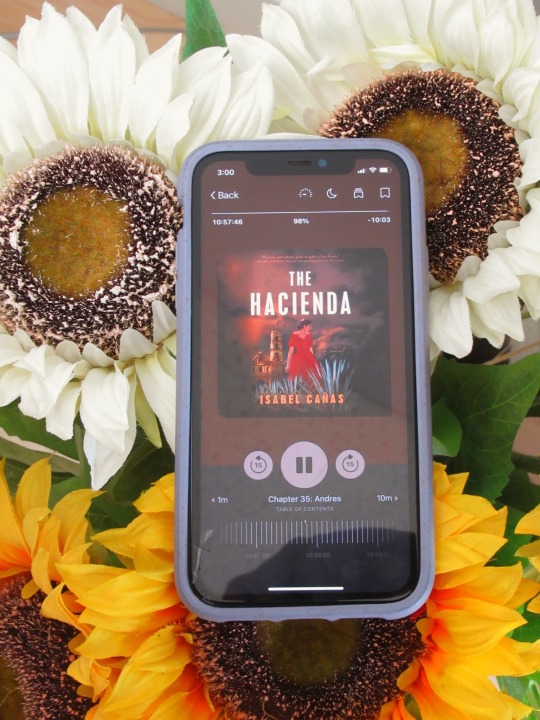
The Hacienda-Review
My anticipation for this book was low-key at first. I was a sucker for the cover though. I knew I would get to it eventually. But, it kept popping up on my Goodreads feed. It almost felt subliminal. Looked it up on Libby and sure enough, the book was there. Seriously, I'm glad my library had copies of it. I was instantly swept off my feet! I forgot about my other books and just fell into world that is Hacienda San Isidro. I'm still reveling in the aftermath. A book hangover, if you will.
Plot:
In the overthrow of the Mexican government, Beatriz’s father is executed and her home destroyed. When handsome Don Rodolfo Solórzano proposes, Beatriz ignores the rumors surrounding his first wife’s sudden demise, choosing instead to seize the security his estate in the countryside provides. She will have her own home again, no matter the cost.
But Hacienda San Isidro is not the sanctuary she imagined.
When Rodolfo returns to work in the capital, visions and voices invade Beatriz’s sleep. The weight of invisible eyes follows her every move. Rodolfo’s sister, Juana, scoffs at Beatriz’s fears—but why does she refuse to enter the house at night? Why does the cook burn copal incense at the edge of the kitchen and mark its doorway with strange symbols? What really happened to the first Doña Solórzano?
Beatriz only knows two things for certain: Something is wrong with the hacienda. And no one there will help her.
Desperate for help, she clings to the young priest, Padre Andrés, as an ally. No ordinary priest, Andrés will have to rely on his skills as a witch to fight off the malevolent presence haunting the hacienda and protect the woman for whom he feels a powerful, forbidden attraction. But even he might not be enough to battle the darkness.
Far from a refuge, San Isidro may be Beatriz’s doom.
4/5 STARS
Let me start off with saying that The Hacienda had my WHOLE attention from the very beginning. I can say with much certainty that it's been a long time since an audiobook pulled me into its clutches that quickly. I'm usually apprehensive with most audiobooks because I don't know how the narrators will be. Most of the time, it takes a couple of chapters for me to get use to narrator's voice and then connect with the story. But not this book, these narrators held my attention from start to finish.
From the VERY start, it enveloped me an unforgettable way. The first chapter starts from the end of the book and works backwards. I absolutely loved that beginning. Not only was I intrigued with the direction but I was instantly curious about these characters. We are first introduce to Andres and know nothing about him or his purpose in the book. It flashbacks to Beatriz before arriving to Sin Isidro and introducing us to her. I actually liked having different perspectives in books. I enjoyed going between Beatriz and Andres' thoughts and experiences.
The relationship and dynamic built between Beatriz and Andres was probably my favorite thing about this whole book. Their forbidden love that grows so delicately and lovely throughout the book. I don't want to say anymore. But, I will forever ship those two! PARA SIEMPRE!
This story takes place during a few timelines: after the Spanish Inquisition, a little before the overthrow of the Mexican government and present day 1800s. You could tell the author really did her researching during that time period. Discussing the Casta system and the constant question of linage and skin color. Casting a light on how the Spanish used their systems to maintain their power and superiority over other racial groups. Their total lack and blatant disregard for mestizos and indigenous life. It's not for the faint-hearted. There was also heavy themes of Catholicism and how it ruled during that time.
The Hacienda also gets very atmospheric. Each chapter brings on that eeriness of being watched. Being hunted and teased by the evil that resides in the house. It almost feels like you stepped into the house and are experiencing it yourself. That's what happened to me. Like the hands of the Hacienda pulled me into its darkness. That my book buddies, is a sign of good writing. I know I could keep writing about it but I have to stop...
In all honesty, I wasn't sure what to expect from this story but this is exactly what I wanted out of a gothic story. I mean, a creepy and eerie haunted house story set in Mexico with intriguing, complex and layered characters? What more can you ask for? But my biggest reason and connection to the story was the culture and heritage. I come from a Guatemalan family. Much of my bloodline is indigenous and Spanish. I was able to understand these topics so well because I heard my own families' stories. I knew the hardships and I know how bad indigenous communities still have it in Guatemala, Mexico and other Central & South American countries. Unfortunately, the fight is far from over. I hope it will end one day. I applaud and appreciate the author for her research and shining lights on topics that still need to be discuss. That need to be changed.
The Hacienda is definitely worth a read. I highly recommend and I can't wait to put it in my collection!
XOXO
Sincerely,
Veronica
#sincerelyveronica#the hacienda#isabel cañas#gothic horror#gothic literature#mexican culture#latinx books#latine books#book blog#bookworm#bibliophile#book review#bookblr#booknerd#books and reading
10 notes
·
View notes